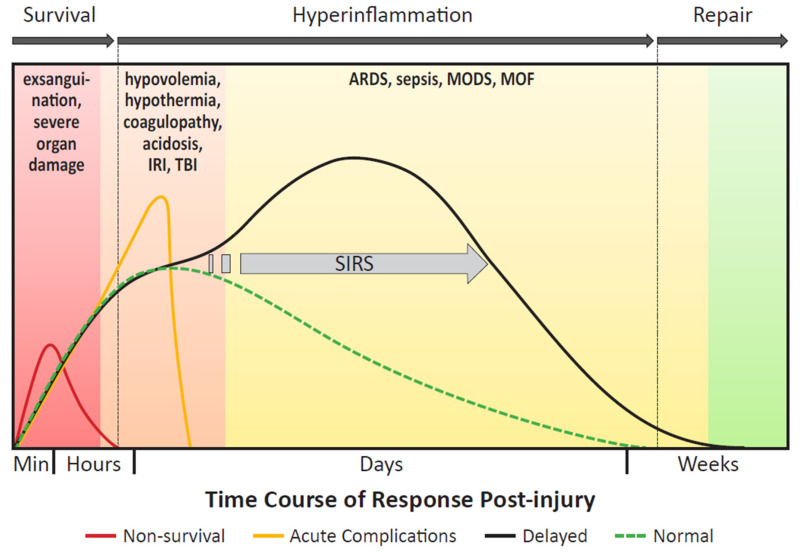Figure 2.
Response to traumatic injury. The three phases following injury are identified by the arrows at the top of the timeline: survival, hyperinflammation, and repair. The longer the hyperinflammation phase is extended, the more delayed the initiation of the repair phase, contributing to late term healing complications. The text beneath the response phase arrows lists various complications associated with increased mortality during the course of the body’s response to trauma—the majority of these conditions after the survival phase are caused by or related to inflammation. The dotted green line shows a “normal” appropriate, restrained inflammatory response that begins to resolve a few days after injury. The red curve represents non-survival—patients that will expire immediately following injury or within the earliest phases of care due to insurmountable injuries and exsanguination. These patients will fail to survive long enough to amount a robust inflammatory response. The orange curve represents patients that will be lost in the first few days of care, usually due to complications related to resuscitation, including ischemic reperfusion injury (IRI), or injury severity, especially in the setting of traumatic brain injury (TBI). The black curve encompasses the patient population that will experience delayed trauma-associated hyperinflammation-induced complications, beginning several days after the initial injury. Dysregulation of the inflammatory response or further insults will cause a patient to deviate from normal recovery, making them more susceptible to the development of systemic inflammatory response syndrome (SIRS), or infection that may cause further complications or death.

